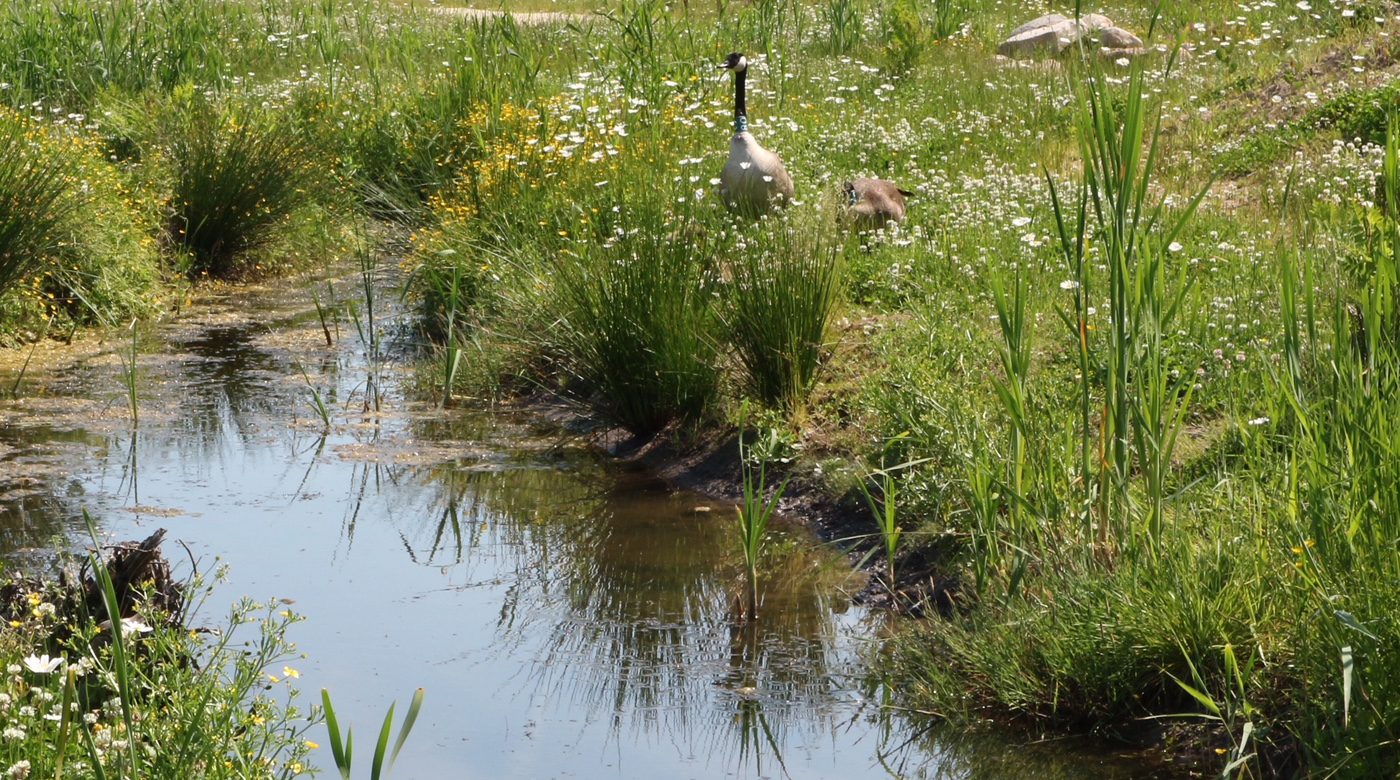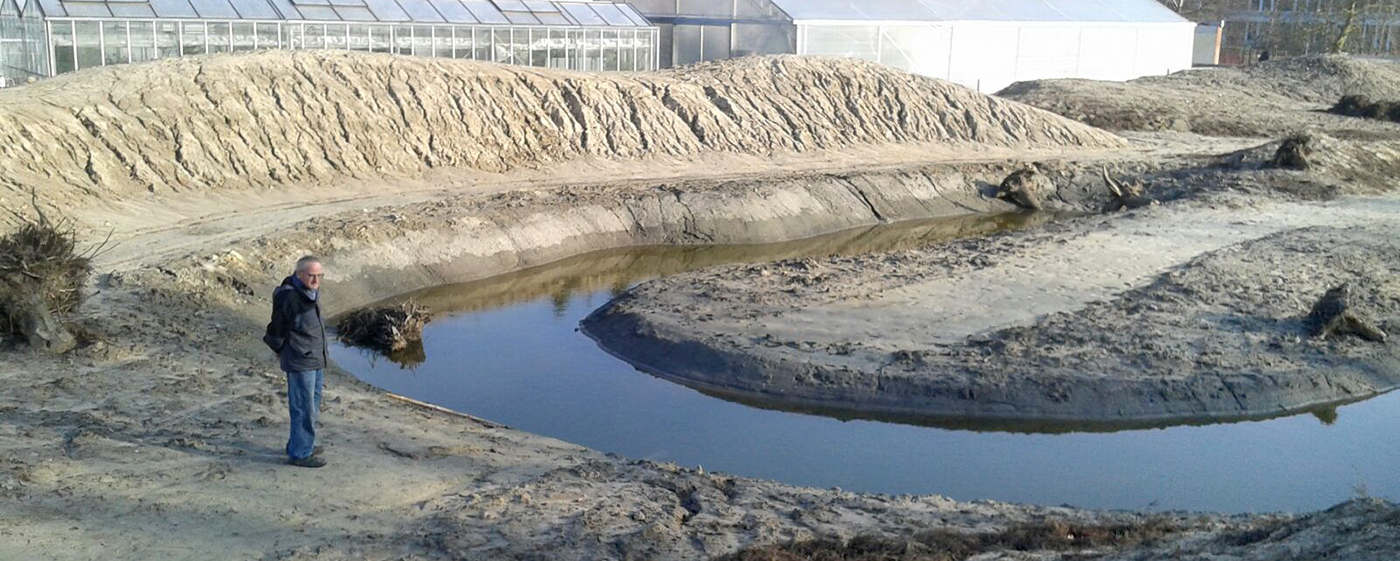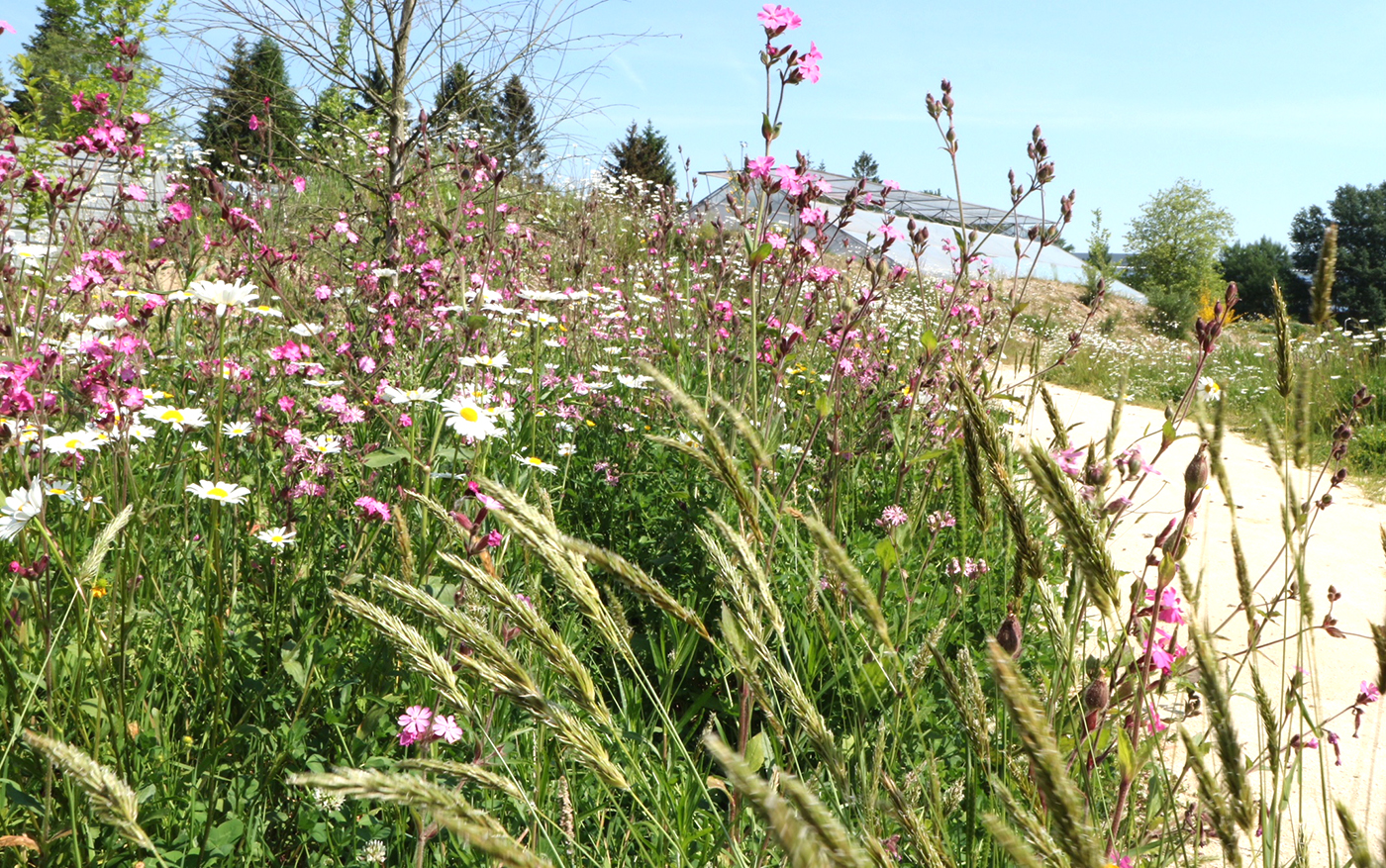Experimental Geo-Garden
Just south of Groningen, the city of Haren boosts one of the oldest and biggest botanical gardens in the Netherlands. Here one can climb and explore a rock garden or meander through a formal Chinese Ming garden. BOOM Landscape was given the rare opportunity to add a new garden to the landscape.

Inspired by geopark De Hondsrug
Directly behind the entrance building, the new garden replaced an energy-inefficient greenhouse. Inspiration for the garden design was sought in the land itself: De Hondsrug. This sandy ridge, stretching from Emmen to Groningen, was pushed up during the Quaternary glaciation and has been recognised for its scientific, geological and archaeological significance. It is the only Geopark in the Netherlands listed as a UNESCO Global Geopark. The garden is a compact representation of the Hondsrug. That is to say, it is not a physical copy of the ridge but a medley of characteristic features as found throughout the Geopark. These features were used as ingredients for the design.

Characteristics
The varied elevation, water aspects and three different soils of the Hondsrug have been integrated into the design. The types of soil include boulder clay sediment left by the lateral moraine upon glacial retreat and sandy grounds resulting from centuries of shifting sands. Years of channelling and erosion since the period of Quaternary glaciation also contributed to the creation of silty valley soils. All of the soils were excavated from the local surroundings which makes the garden a truly authentic one.

A bend in one of the watercourses of the Hondsrug also served as inspiration and was recreated in the design: a brook slices its way through the ridge towards the moat that encircles the garden. The final characteristic feature are the sandy white pathways that delineate the route through the garden and recall the many chalky lines left by the herds of sheep roaming the Hondsrug. The paths link up naturally with the network of pathways through the other gardens and entice visitors into this exciting new garden.

Botanical experiment
The plants themselves are a different story because, apart from some trees planted to line the outer edge of the garden, we decided not to plant anything and let the ground develop its own life. The original soils of the Hondsrug are all in place and now it is up to nature to fill in the blanks.
We researched which types of vegetation we could expect per soil type and then left the garden to its own devices.

Picture: The garden a few days before the opening ceremony.

Picture: garden three months after the opening ceremony.
It was a bold plan, but also a valuable experiment because by allowing the garden to develop itself, we and the public are able to witness the process of growth and how the history the Hondsrug took shape.

A picture of glacial erratics, white paths, the brook and the variating relief of the terrain. The bridge shown was designed by Gabriël Lester.


